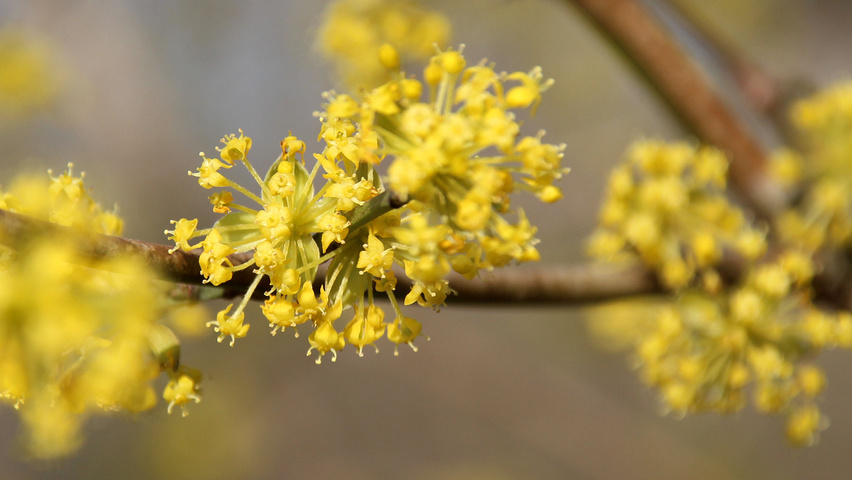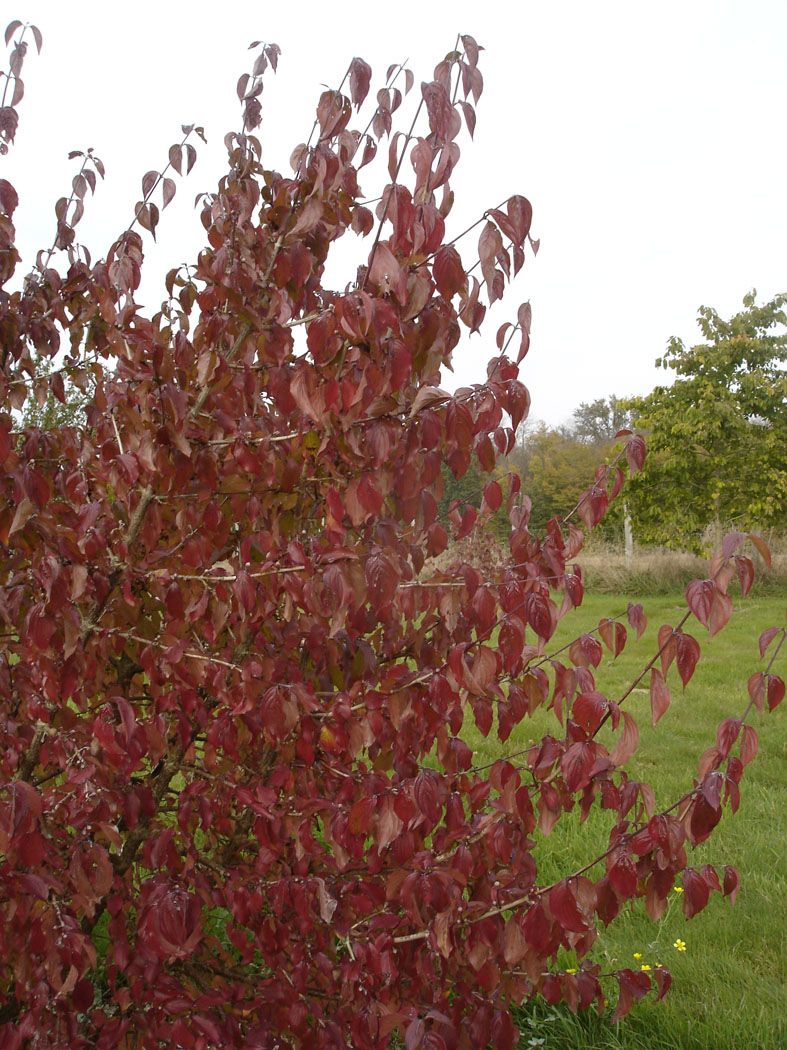

Leaves have yellow, green, and pink margins, yellow flowers, red fruits Leaves bordered in yellow, green, and pink Profile Video: See this plant in the following landscape: Cultivars / Varieties: VIDEO created by Andy Pulte for “Landscape Plant Identification, Taxonomy and Morphology” a plant identification course offered by the Department of Plant Sciences, University of Tennessee. Calico scale, dogwood sawfly, Japanese maple scale, leafhoppers, oyster shell scale, leaf and flower blight (botrytis), crown canker, bacterial leaf scorch, powdery mildew, and septoria leaf spot can occur.

Insects, Diseases, and Other Problems: The plant has very few serious diseases or pests problems.

In late winter to early spring the bright small clusters of yellow flowers appear on the naked branches. The plant is tough, adaptable, and is low maintenance. It may be propagated by semi-hardwood or hardwood cuttings and grafting. The plant produces suckers that need to be promptly removed to control its spread.
Cornus mas feuille full#
The cornelian cherry dogwood prefers full to partial shade, and moist, well-drained rich soils. The common name refers to the bright red fruits that resemble the gemstone, Carnelian. The species name, mas, is Latin for the word "male." This refers to the possible absence of fruits on new plants for several years.

The genus name, Cornus, is Latin from the word cornu, which means "horn." This references the hardness of the wood. The shrub or small tree is native to central and southern Europe as well as western Asia. The plant has excellent resistance to dogwood anthracnose and the dogwood borer. On mature trees, the bark is scaly and exfoliating. Red fruits develop and mature in the mid-summer. Its yellow flowers appear in early spring before the leaves emerge. The cornelian cherry dogwood is a deciduous shrub or small tree that can grow up to 25 feet tall and 20 feet wide. Common name refers to the cherry-like fruits which resemble in color the semi-precious gemstone carnelian (or cornelian).Phonetic Spelling KOR-nus mass Description This name was applied to this plant because it was seen as the opposite of Cornus sanguinea, known as the female or wild cornel. The specific epithet mas means "masculine" or "male". Cornus is also the Latin name for cornelian cherry. Genus name comes from the Latin word cornu meaning horn in probable reference to the strength and density of the wood. Fruits may be used for making syrups and preserves. Fruits are edible, although sour tasting fresh off the plant. Fruits are ellipsoid, fleshy, one-seeded berries (drupes to 5/8" long) which mature to cherry red in mid-summer. Ovate to elliptic dark green leaves (to 4" long) typically develop insignificant fall color. Each umbel is surrounded at the base by small, yellowish, petaloid bracts which are much less showy than the large decorative bracts found on some other species of dogwood such as Cornus florida (flowering dogwood) and Cornus kousa (kousa dogwood). Yellow flowers on short stalks bloom in early spring before the leaves emerge in dense, showy, rounded clusters (umbels to 3/4" wide). Scaly, exfoliating bark develops on mature trunks. It typically grows over time to 15-25' tall with a spread to 12-20' wide. Cornus mas, commonly known as cornelian cherry, is a deciduous shrub or small tree that is native to central and southern Europe into western Asia.


 0 kommentar(er)
0 kommentar(er)
